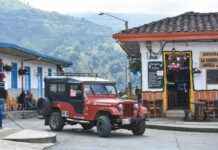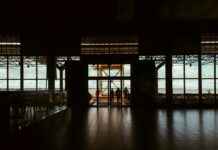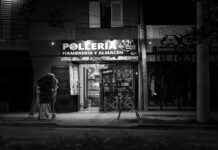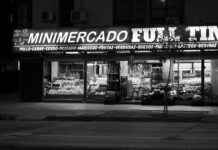After Brest and Saint-Denis, in Reunion, Téléo is the third cable car in France.
«In Toulouse we have a star-shaped network and we needed a cross-connection in the south of the agglomeration, to go from one peripheral area to another, without going through the center», specifies Nicolas Misiak, the president of Tisséo Voyageurs, the agglomeration’s public transport authority.
Departing from the Université-Paul-Sabatier metro station, the blue-grey cabins rise towards the CHU Rangueil, at the top of a hill, before descending on the other side, above cliffs and the Garonne, towards the Oncopole, a hospital and research centre.
The spacious cabins can carry 34 passengers, including 20 seated and wheelchairs, up to 75 meters above the ground. In good weather, you can see the Pyrenees chain to the south.
– «A little scared» –
«The Paul-Sabatier University of Sciences, 20,000 students, the CHU, the Oncopole, these three sites must work together», underlines the mayor LR of Toulouse, Jean-Luc Moudenc, about this project which cost 82 million euros. euros.
He hopes that Téléo, with a capacity of 8,000 passengers per day, will help reduce car traffic. While waiting for the third metro line, the construction of which began in 2021.
«Usually, it takes me 18 minutes by shuttle to go to work, sometimes more in the evening with the traffic jams, there only four!» Rejoices Hili Saloua, 41, employee of the University Hospital of Rangueil.
«For the first time, I was a little scared, I still have to get used to it,» she smiles, among the many travelers who came to discover the installation.
«These are the same cabins as those of the ski resort of Val d’Isère, in the Alps», points out Jean Souchal, the president of Poma, a company specializing in winter sports infrastructure, before diversifying into urban cable cars, from Rio to New York via Barcelona.
«We are not in competition with other modes of transport, we complete the offer, the cable car goes where the others (…) can no longer go», underlines the business manager.
«Urban cable cars, we’ve been talking about them for about fifteen years, they’re developing, but slowly, they have advantages in very dense urban environments, or in the case of particular topography. It’s a very safe mode of transport, not noisy, with interesting commercial speeds», notes Anne de Bortoli, transport expert from the National School of Bridges and Roads in Paris.
– «Tele-pheeric» –
100% electric equipment, «its level of carbon footprint is three times less impactful than the bus and five times less than the car», she affirms, before adding: «A very good carbon footprint, it is absolutely necessary minimizing greenhouse gas emissions in the city, and promoting electrified public transport, is the future».
With only five pylons over 3 km, Poma engineers tried to minimize the environmental footprint. «It’s a mode of transport with easy integration into an urban environment. Life doesn’t stop during construction. A tram construction site is three or four years of hassle,» says Jean Souchal.
«It’s the first time I’ve taken one, it’s magnificent! Of course, we’re going to bring people to see it», enthuses Christelle Bronner, 50, who came with her two 14-year-old children. and 11 years old.
Now fashionable, projects have been launched in other French cities such as Ajaccio, Grenoble and Créteil.
«I think it can take on a leisure dimension. In Medellin, in New York, we have transformed a trip into a trip, in a fun way, says the boss of Poma, at sunrise or sunset, it’s tele- pheeric».













